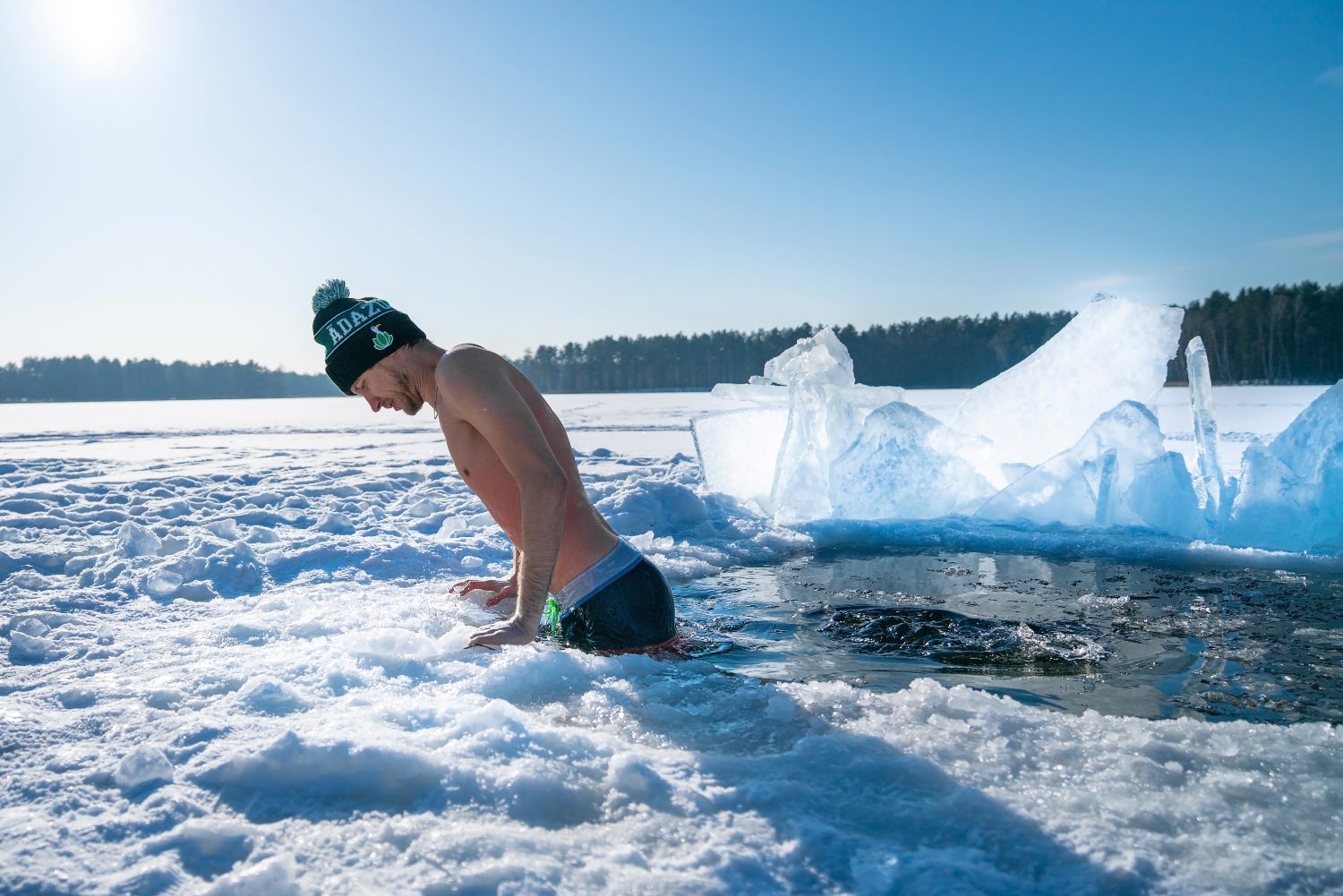How I Learned to Stop Worrying and Love Cold Showers!
How it all started
When I was eight years old, I took Jeet Kune Do martial arts classes in my neighborhood dojo. The instructor was a friend of my parents. One day he mentioned that pouring a bucket of cold water on your body after the shower is perfect for your health.
My mom and dad jumped on this idea and instituted a new policy - a bucket of cold water after each time my brother or I took a shower. We called my parents every time we were ready to get out of the shower, and they would pour water on us from a bucket. My dad just poured the whole bucket down in one quick burst. My mom did it in two sets: the first half on the front of the body, the second half on the back. I hated this method because I stayed in contact with the cold water for longer.
We kept this tradition for a couple of years, but it slowly went away.
Jesus and a walrus
In the mid-2000s, I was dating a woman named Anna. She was deeply into personal growth training courses, somewhat similar to The Landmark Forum in the US. She and her friends were swimming in the ice water in the middle of Russian winter as a challenge.
There's a Russian tradition of ice water swimming in January during the Orthodox Epiphany, a religious holiday celebrating the baptism of Jesus. People swim outside in ice water and drink vodka right after to warm up. These people are often called "walruses," an analogy with arctic animals that swim in cold waters.
I decided to do the same to impress Anna. I still held this belief from my childhood that going in the cold water is incredible. So we went to one of the state parks inside Moscow city limits where walruses were making their holiday swim.
It was relatively normal January weather, around 0º F (-18ºC). We arrived at the park mid-afternoon and saw people swimming in an ice hole in the middle of the lake. Because Moscow is a peat soil region, the lake water was dark and ominous. My initial courage started wearing off. I faced the terrifying prospect of going into freezing water!

I decided to go fast before changing my mind. I took off my outer clothes and left only a swimsuit. I ran over the ice surface towards the hole. The ice was so cold that the moisture on the bottom of my feet was freezing to the surface. Without letting myself have second thoughts, I went down a ladder.
The water was beyond cold. It didn't feel like typical "cold water" but an entirely new type of sensation. My body didn't know how to react. It was like a thousand micro-needles pierced into my skin, and my limbs started vibrating. I think I screamed. I hope it sounded more like a battle cry rather than a crying dog. But I can't be sure.
After ten seconds, I jumped out. I didn't feel cold anymore, and my skin got dry very quickly, even before I got a towel. Then, I put on my nearly frozen clothes and promptly jumped into my car.
What happened after surprised me. I felt alert, alive, and vigorous for days. It's like my body went to extreme survival mode and started fighting for my life, producing some powerful energy. The energy stayed with me for several days, a good vitality boost during the generally long and depressing Russian winter.
The cold showers
In the mid-2010s, I started reading several self-help blogs that advocated for taking cold showers.
The Art of Manliness video got me thinking that maybe I should restart the long-forgotten habit from my childhood. Tim Ferris's Four Hour Body book also spiked my interest in the cold water for fat loss. Also, I read a lot of praise for Wim Hof's health philosophy focused on exposing the body to cold temperatures.
I tried starting cold showers, but I failed. After the first streams of water hit my skin, I flinched and injured my upper back. This misstep deterred me from taking cold showers for a couple of years. However, the idea was still growing in my head.
I tried to change the water temperature gradually from 93ºF / 33ºC to 78ºF / 25ºC. This approach didn't get me too far. When you start with warm water, even slightly chilly water feels like freezing.
The next attempt that was finally successful was to gradually put 60ºF / 15ºC water over my body, starting with my legs and moving upwards to cover the torso, shoulders, and head. I was shivering in extreme discomfort, but I didn't flinch. I was finally able to do it! I stuck to this technique for a few months.
California winters are not particularly cold. However, because most houses have thin walls and single-layer windows, the temperature inside gets down to 60ºF / 15ºC. When you wake up in a relatively cold room, the last thing you want is to get into cold water. So, I switched to a less extreme version of cold showers. I started with water of normal temperature 93ºF / 33ºC. Then, after washing myself, I moved to 60ºF / 15ºC quickly. The transition was not pleasant. However, it's easier to convince yourself to get into the warm shower first and later make the difficult transition to cold water.
To avoid the temptation to skip cold water, I created a rule to end every wash with cold water. This approach worked very well for two years. However, something was still missing…
When taking showers I combined two goals: keep myself clean and train my willpower. Unfortunately, they didn’t mix well together. The prospect of cold water constantly created resistance. A voice in my head was constantly whispering to me reasons to skip: "I don't have time," "I'm sick," or "I will do it later." As a result, I started showering less often.
The final solution came from this tweet by The Rock:
That was it! I needed to separate my cold shower routine from my wash routine. I tried it once and followed the same pattern every day: cold shower in the morning, warm shower in the evening, after the workout.
Why take cold showers?
We all live in a space called the "comfort zone." We like to be comfortable. We want to move effortlessly through the day, looking for pleasurable experiences. It's natural to follow pleasure.
My comfort zone includes:
- Working 9 to 5 job with guaranteed income
- Watching TV every evening
- Casual alcohol drinking
- Pleasing people at work
- Browsing social media
I was seldom going the extra mile to make sure I was doing incredible work. Instead, I benchmarked myself against average instead of the best. I was jealous of other people’s success instead of pursuing my dreams.
A comfort zone is a place of stagnation. Soon we lose the ability to do more. We go on the path of least resistance. It feels secure and natural. We are afraid to do something that challenges the existing way of living and exposes us to an unfriendly risky environment. We are now watching only TV shows because it takes too much effort to focus on great movies. We start ordering unhealthy food delivery more and more because it's easier and more fun.
Moving forward requires going through discomfort. You need to wake up early, stay late, challenge the status quo, start difficult conversations, and make decisions that include no guarantee of success.
As with any skill, stepping outside your comfort zone gets better with practice. You need to have some hardships regularly to make sure you can still concentrate your willpower on achieving your goals. Cold showers are an easy way to start. You can get uncomfortable by simply turning the valve into a different setting.
Every morning after getting up, I hop into the shower and turn on the cold water. I stand right under the shower head. I wait until the first drops of the cold water hit my skin. I shiver for a few seconds. Sometimes I scream. But more often than not, the chill water feels less scary than I expected. My body is already accustomed to the cold water, and it’s starting to feel bearable in a few seconds.
That gets me thinking: do I need to come up with a new way to challenge myself to keep moving forward?
